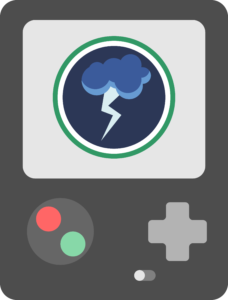Lesson 4: Control the Flow
Description:
These materials are designed to enhance Chapter 2, Activity 4: Control the Flow. Youth will add a switch to the circuits they built in Lesson 3 to observe the effects of open versus closed circuits.
Focus Questions:
- How does a switch work?
Life Skills:
- Problem-solving
Virtual Assets
Control the Flow
4-H Agent Taylor Jones demonstrates how a switch can open or close a circuit.
Design Notebook: Control the Flow
Youth think like electrical engineers to modify the flashlights they built in Lesson 3. Complete the Design Notebook: Control the Flow activity to help youth plan, build, evaluate, and iterate their switch designs.
Lesson 5: Conducting Things
Description:
These materials are designed to enhance Chapter 2, Activity 5: Conducting Things. Youth will test the conductive properties of different household items and then categorize materials as either conductors or insulators.
Focus Questions:
- Which materials make good conductors? Good insulators?
Life Skills:
- Problem-solving
Virtual Assets
Parts of a Circuit
Dr. Grant Ellington introduces the three basic components found in an electrical circuit.
Conductors and Insulators
Dr. Grant Ellington explains the difference between a conductor and an insulator.
Using a Multimeter to Check Conductivity
Dr. Grant Ellington demonstrates how to read a multimeter. He also shows how youth can use a multimeter to determine whether an item is a conductor or an insulator.
Conductors and Insulators Sort
Click here to learn how to differentiate between conductors and insulators by sorting the images into those two categories.
Conductors and Insulators Sort (Print)
Download this document and fill out the blanks to learn how to differentiate between conductors and insulators by sorting the images into those two categories.
Lesson 6: Circuit Sense
Description:
These materials are designed to enhance Chapter 2, Activity 6: Circuit Sense. Youth will read circuit diagrams to determine whether a given circuit is open or closed. They troubleshoot and fix diagrams for problematic circuits.
Focus Questions:
- How do electrical engineers communicate about their work with circuits?
Life Skills:
- Marketable/Useful Skills
Virtual Assets
What Is a Circuit Diagram?
Electrical engineers and electricians use special tools called “circuit diagrams” to communicate their circuit designs. This video introduces three important symbols that youth can use for their own designs.
What Is a Circuit Diagram?
Check Your Understanding of circuit diagrams by answering the questions in this video quiz.
Circuit Construction Simulation
Youth can use this tool to visualize current in open versus closed circuits. They can also switch between “object’ and “diagram” views to see how electricians and electrical engineers communicate using symbols. You can control the simulation from this window. Click in the lower right-hand corner to see it in fullscreen view or access below.
PhET Interactive Simulations
University of Colorado Boulder
https://phet.colorado.edu
Visualizing Circuit Construction
This activity is structured to help youth use the Circuit Construction Simulation to explore circuit diagrams.
Open vs. Closed Circuits Interactive Video
Youth can review open and closed circuits with this tutorial. The video features three interactive questions, automated feedback, and a bonus question. Note: If you are using the video on any sort of touchscreen, including a smartphone, use a stylus to select answer choices more easily.
Lesson 7: Is There a Fork in the Road?
Description:
These materials are designed to enhance Chapter 2, Activity 7: Is There a Fork in the Road?. Youth will modify their simple circuits to demonstrate how parallel and series circuit designs work.
Focus Questions:
- How many different ways can you make a functioning circuit?
Life Skills:
- Critical Thinking
Virtual Assets
Series and Parallel Circuits
Dr. Grant Ellington explains the difference between a series circuit and a parallel circuit and he provides everyday examples of each.
Using a Multimeter to Measure Voltage
Dr. Grant Ellington demonstrates how to use a multimeter to figure out what happens to voltages when batteries are wired in series.
Building a Series Circuit
Dr. Grant Ellington builds an example of a series circuit and identifies its power source, path, and load.
Building a Parallel Circuit
Dr. Grant Ellington builds an example of a parallel circuit and compares it to a series circuit.
Design Notebook: A Fork in the Road
Youth explore circuit configurations as they determine how best to add a second lightbulb to their flashlights. Complete the Design Notebook: A Fork in the Road to help youth plan, test, and evaluate their ideas.
This curriculum is produced by National 4-H and can be located at shop4-h.org. The activities on this page are designed to enhance and work with the curriculum, they are not a substitute for the book content.




